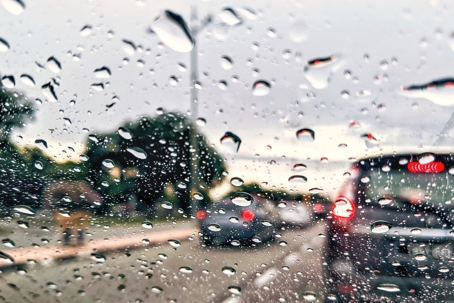This year, daylight savings time ends on November 7, 2021. When daylight savings time ends, we “fall back” and gain an extra hour. Unfortunately, the time change comes with safety risks. Gaining an hour (or losing one in the spring) can disrupt our circadian rhythms and make us feel tired. As a result, there is an uptick in fatal car crashes, workplace accidents, and even heart attacks and strokes during daylight savings time.
Although you no longer have to wake up in the dark, the sun will start to go down during rush hour, which creates hazards on the road – especially when paired with drowsy drivers. Falling back also creates additional risks for pedestrians because it is more dangerous to walk after dark.
Daylight savings time is an indicator of colder weather, as well. Fortunately, you can take some steps to prepare for winter and the shorter days that come with it.
Check Your Tire Pressure
Sudden temperature changes can cause tire pressure to drop and driving with underinflated tires can increase the risk of a tire blowout. Check – and adjust – your tire pressure, so your tires work properly. This is especially important because colder temperatures can come with sleet and snow, and your tires can only handle unfavorable weather conditions when they are in peak condition.
Make Sure Your Headlights Work
Driving in the dark is unsafe if any of the lights in your vehicle are out. Have a friend help you check your headlights, brake lights, and taillights, or better yet, take your car in for routine maintenance and service. Your mechanic will let you know if anything needs to be fixed.
Change Out Your Windshield Wipers
According to Firestone Complete Auto Care, you should replace your windshield wiper blades every 6 to 12 months. Over time, the rubber in your wiper blades may crack, making them less effective in rain, sleet, or snow.
Your windshield wipers can also get rusty and brittle in cold weather, which could cause them to damage your windshield or fly off and create traffic hazards.
Watch Out for Animals
Deer and other animals can be more difficult to see in the dark, and deer are most active at dusk and dawn. October to January is also mating season for most deer, so you can expect them to be out and about.
To avoid hitting an animal, Geico recommends:
- Use your headlights and bright lights when appropriate
- Stay in the center lane on multi-lane roads
- If you see one deer, keep an eye out for others
- Do not swerve to avoid hitting an animal (instead, brake calmly and stay in your lane)
- Honk (the sound may scare the animal out of your path)
If you do hit an animal, alert emergency services if there are any injuries, and call the police if there is any significant property damage. Do not try to approach the deer if it is still alive. If the deer presents a hazard to other drivers or is in an unsafe place, notify the authorities.
Routine Safety Checks
Daylight savings time can be a great time to prioritize safety in all aspects of your life. You can use this time to:
- Check your vehicle for recalls
- Test your smoke and carbon monoxide detectors
- Make sure you have a fully charged fire extinguisher
- Change all the batteries in your home (especially the ones in flashlights)
- Get rid of expired medications
- Prepare a winter emergency kit for your vehicle
- Make sure you are ready for severe weather events (winter storms, hurricanes, tornadoes, etc.)
When you reset your clocks, take a moment to ensure the safety of your home and car, too. Preparing for daylight savings time – and the rest of the year – could save your life.
Of course, you can only control your actions. If someone drives drowsy, loses control of their vehicle, or otherwise behaves carelessly, and you get hurt as a result, Vollor Law Firm, P.A. is here to help.
Call us at (662) 269-6188 or contact us online to get a free consultation and put more than 20 years of collective legal experience on your side.

